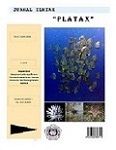Study on Ecological Economic Benefits of Mangrove in Sauk Village, Lolak Sub-district, Bolaang Mongondow District
DOI:
https://doi.org/10.35800/jip.5.2.2017.15911Abstract
This study was carried out in Sauk village,  Lolak district, Bolaang Mongondow regency on June 10th – August 11th, 2016, around mangrove ecosystem at the geographic position of 00 50’ 10’’ N and 1230 56’ 40’’E. It was aimed to a) assess the ecological condition of the mangrove ecosystem of Sauk village based upon the community structure and (b) estimate the economic value of the mangrove ecosystem from direct and indirect benefit. Results found that the ecological value of the mangrove ecosystem was categorized as “rare†(<1000 trees/Ha), with low diversity index (< 2), and Sonneratia alba had very important role with the highest IVI. Total economic value was IDR. 1,116,830,000 per year based upon the benefit value.
Keywords : economic benefit, ecology, mangrove ecosystem, Sauk village.
Â
ABSTRAK
Penelitian ini dilakukan di Desa Sauk Kec, Lolak Kab. Bolaang Mongondow pada tanggal 10 juni–11 Agustus 2016, di sekitaran kawasan ekosistem mangrove Desa Sauk yang terletak pada posisi geografis N 00 50’ 10’’ dan E 1230 56’ 40’’. Tujuan penelitian ini adalah : (a) Menilai kondisi ekologi ekosistem mangrove di Desa Sauk berdasarkan struktur komunitas. (b) Menghitung nilai ekonomi ekosistem mangrove berdasarkan nilai guna langsung dan tidak langsung. Nilai ekologi ekosistem mangrove di Desa Sauk dikategorikan “jarang†(<1000 pohon per Ha), dengan indeks keanekaragaman rendah (< 2) dan jenis yang yang sangat berperan adalah Sonneratia alba yang memliki INP tertinggi. Sedangkan nilai ekonomi total berdasarkan nilai manfaat sebesar Rp.1.116.830.000 per tahun.
Kata Kunci : Manfaat ekonomi, ekologi ekosistem mangrove Desa Sauk
Downloads
Published
How to Cite
Issue
Section
License
COPYRIGHT
Authors who publish with this journal agree to the following terms:
Authors hold their copyright and grant this journal the privilege of first publication, with the work simultaneously licensed under a Creative Commons Attribution License that permits others to impart the work with an acknowledgment of the work's origin and initial publication by this journal.
Authors can enter into separate or additional contractual arrangements for the non-exclusive distribution of the journal's published version of the work (for example, post it to an institutional repository or publish it in a book), with an acknowledgment of its underlying publication in this journal.
Authors are permitted and encouraged to post their work online (for example, in institutional repositories or on their website) as it can lead to productive exchanges, as well as earlier and greater citation of the published work (See The Effect of Open Access).




















